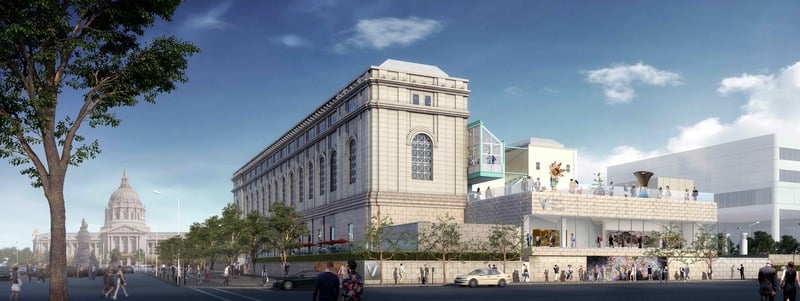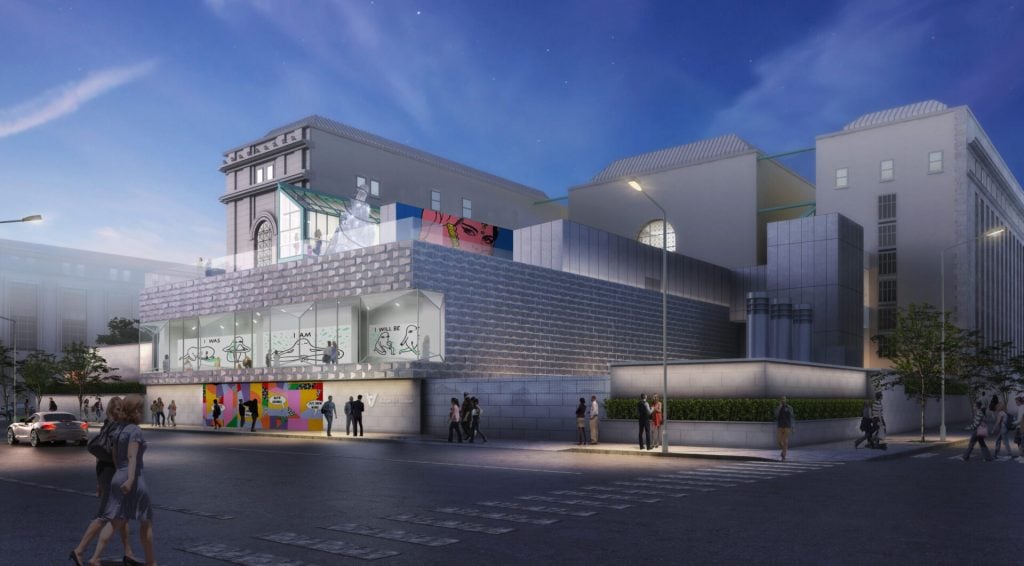Law & Politics
The Asian Art Museum in San Francisco Is Suing the Architects Behind Its Major Expansion, Alleging Work of ‘Inadequate Quality’
The museum claims the pavilion required costly repairs before it could even open.

The museum claims the pavilion required costly repairs before it could even open.

Sarah Cascone

In 2020, just before lockdown, the Asian Art Museum in San Francisco completed work on a major expansion as part of a $100 million fundraising effort. Now, it’s suing Why Architects, the New York firm that designed the 13,000-square-foot pavilion, named after Akiko Yamazaki and Jerry Yang.
The pavilion “was delivered late, and as originally constructed, it failed to meet even the minimum museum-quality standards: it leaked in multiple locations, its interior environment was of inadequate quality, and its rooftop terrace was unusable,” wrote the museum in a statement. “It was only through substantial intervention by the [Asian Art Museum] Foundation, at its own significant cost, that these major issues were identified and corrected, and a first-class, museum-quality pavilion was finally achieved.”
The lawsuit follows mediation efforts, and comes in addition to a suit previously filed by Swinerton Builders, the project’s general contractor, against Why in San Francisco County Superior Court in 2021. The Asian Art Museum was also named in that suit, but has now filed a motion for a cross-complaint, defending against Swinerton’s claims and seeking damages due to breach of contract from Why.
The museum said that it “is trapped in the middle” of the dispute over who should be responsible for paying for the additional costs incurred by the necessary repairs and interventions to the original design. The $38 million project was first announced in 2016.

The Akiko Yamazaki and Jerry Yang Pavilion at the Asian Art Museum San Francisco, rendering. ©Asian Art Museum and Why Architects.
“Swinerton claims that it is not responsible, and points to what it contends were incomplete and inadequate plans prepared by Why,” the museum added. “Why denies those claims, and asserts that Swinerton failed to follow Why’s designs and basic, standard construction practices.”
“We acknowledge that litigation is a process and look forward to defending our hard work on the AAM project,” Why’s lawyers told ARTnews. “Why is proud of its design, and we are confident that all issues at AAM were caused by construction failures and were not the fault of design professionals.”
Founded by creative director Kulapat Yantrasast, Why has designed other major art-world projects for the Speed Art Museum in Louisville, Kentucky; the Cheech Marin Center for Chicano Art and Culture at the Riverside Art Museum in California; and the Art Institute of Chicago. The firm is heading the renovation of the African and Oceanic art galleries at New York’s Metropolitan Museum of Art.
More Trending Stories: